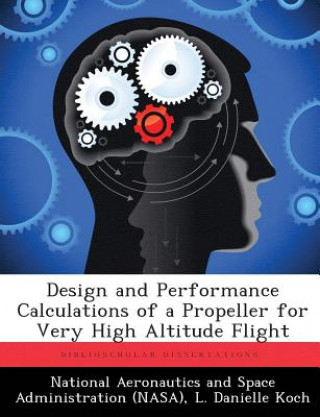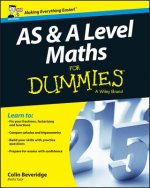
Kod: 08287025
Design and Performance Calculations of a Propeller for Very High Altitude Flight
Autor L Danielle Koch
Reported here is a design study of a propeller for a vehicle capable of subsonic flight in Earth's stratosphere. All propellers presented were required to absorb 63.4 kW (85 hp) at 25.9 km (85,000 ft) while aircraft cruise velocit ... więcej
- Język:
 Angielski
Angielski - Oprawa: Miękka
- Liczba stron: 134
Wydawca: Biblioscholar, 2013
- Więcej informacji o książce

Zobacz książki o podobnej tematyce
-

Human Side
72.12 zł -
![Poems, Lyrical and Miscellaneous. [Edited by J. Aikin.] Poems, Lyrical and Miscellaneous. [Edited by J. Aikin.]](https://media.libris.to/jacket/07998742t.jpg)
Poems, Lyrical and Miscellaneous. [Edited by J. Aikin.]
93 zł -5 % -

Nick West Adventures: The Quest For Atlantis
86.02 zł -

Essay upon the law of contracts and agreements. By John Joseph Powell, ... In two volumes. ... Volume 2 of 2
143.14 zł -5 % -

Decades of Doubt
94.28 zł -22 %
Bon podarunkowy: Radość gwarantowana
- Podaruj bon o dowolnej wartości, a my się zajmiemy resztą.
- Bon podarunkowy dotyczy całej naszej oferty.
- Możesz wydrukować elektroniczny bon z e-maila a następnie przekazać go obdarowanemu.
- Ważność bonu wynosi 12 miesięcy od daty wystawienia.
Więcej informacji o Design and Performance Calculations of a Propeller for Very High Altitude Flight
Za ten zakup dostaniesz 161 punkty
 Opis
Opis
Reported here is a design study of a propeller for a vehicle capable of subsonic flight in Earth's stratosphere. All propellers presented were required to absorb 63.4 kW (85 hp) at 25.9 km (85,000 ft) while aircraft cruise velocity was maintained at Mach 0.40. To produce the final design, classic momentum and blade-element theories were combined with two and three-dimensional results from the Advanced Ducted Propfan Analysis Code (ADPAC), a numerical Navier-Stokes analysis code. The Eppler 387 airfoil was used for each of the constant section propeller designs compared. Experimental data from the Langley Low-Turbulence Pressure Tunnel was used in the strip theory design and analysis programs written. The experimental data was also used to validate ADPAC at a Reynolds numbers of 60,000 and a Mach number of 0.20. Experimental and calculated surface pressure coefficients are compared for a range of angles of attack. Since low Reynolds number transonic experimental data was unavailable, ADPAC was used to generate two-dimensional section performance predictions for Reynolds numbers of 60,000 and 100,000 and Mach numbers ranging from 0.45 to 0.75. Surface pressure coefficients are presented for selected angles of attack. in addition to the variation of lift and drag coefficients at each flow condition. A three-dimensional model of the final design was made which ADPAC used to calculated propeller performance. ADPAC performance predictions were compared with strip-theory calculations at design point. Propeller efficiency predicted by ADPAC was within 1.5% of that calculated by strip theory methods, although ADPAC predictions of thrust, power, and torque coefficients were approximately 5% lower than the strip theory results. Simplifying assumptions made in the strip theory account for the differences seen.
 Szczegóły książki
Szczegóły książki
Kategoria Książki po angielsku Society & social sciences Education
276.72 zł
- Pełny tytuł: Design and Performance Calculations of a Propeller for Very High Altitude Flight
- Autor: L Danielle Koch
- Język:
 Angielski
Angielski - Oprawa: Miękka
- Liczba stron: 134
- EAN: 9781288910977
- ISBN: 9781288910977
- ID: 08287025
- Wydawca: Biblioscholar
- Waga: 254 g
- Wymiary: 246 × 189 × 7 mm
- Data wydania: 12. March 2013
Ulubione w innej kategorii
-

Oxford IB Diploma Programme: IB Economics Course Book
268.96 zł -

OET Preparation
49.05 zł -

Practical Guide on Veterinary First Aid using Homeopathy
71.21 zł -

Cambridge IGCSE (R) & O Level Complete Physics: Student Book Fourth Edition
158.95 zł -

Business Partner B2 Workbook
77.46 zł -

Business Partner B1 Workbook
87.03 zł -

Imagine If...
52.37 zł -15 % -

OET Reading Subtest Preparation
71.21 zł -

Vol 2 Blackletter Lettering Adventures
123.29 zł -

AS & A Level Maths For Dummies
97.50 zł -5 % -

CompTIA Security+ Review Guide - Exam SY0-601
133.77 zł -4 % -

Amazing Autistic Brain Cards
205.70 zł -

Hanbo Jutsu: Use of Hanbo, Cane and Walking Stick for Self Defense
55.29 zł -

Embodied Teen
106.97 zł -23 % -

Blue Book of Grammar and Punctuation: An Easy- to-Use Guide with Clear Rules, Real-World Examples , and Reproducible Quizzes, Twelfth Edition
85.82 zł -4 % -

Positive Discipline Tools for Teachers
77.56 zł -5 % -

Oxford IB Diploma Programme: IB Theory of Knowledge Course Book
250.93 zł -

Oxford IB Study Guides: Economics for the IB Diploma
215.47 zł -

Speed and Accuracy: Division
33.44 zł -4 % -

GCSE Spanish Exam Practice Workbook (includes Answers & Free Online Audio)
33.84 zł -9 % -

KS3 Maths 10-Minute Weekly Workouts - Year 7
33.94 zł -10 % -

Vertical Academy
169.93 zł -

Grade 9-1 GCSE Maths AQA Revision Question Cards - Higher
40.99 zł -10 % -

Human Landscapes from My Country
117.55 zł -5 % -

Cambridge IGCSE (R) & O Level Complete Chemistry: Student Book Fourth Edition
169.73 zł -

Oxford IB Diploma Programme: IB Course Preparation Mathematics Student Book
169.73 zł -

1000 TRIOS or gapped sentences for Cambridge Advanced and Proficiency Exams
114.03 zł -

Business Partner B1+ Workbook
79.17 zł -

(ISC) SSCP SG & SSCP Practice Test Kit, 3e
299.58 zł -23 % -

Einkorn
105.76 zł -4 % -

Czech Verbs
160.67 zł -

Motivation and Reinforcement
214.26 zł -

Pearson Edexcel International GCSE (9-1) English Language B Student Book
227.76 zł -

Read Write Inc. Phonics: Red Ditty Book Bag Books (Mixed Pack of 10)
279.84 zł -

Oxford International Primary Maths Second Edition: Practice Book 1
55.29 zł -

Forensic Linguistics Articles
72.62 zł -

Corrected Squares of The Book of Abramelin
2439.27 zł -

Exam Prep for Microeconomics by Pindyck & Rubinfeld, 6th Ed.
182.66 zł -

KS3 Maths 10-Minute Weekly Workouts - Year 8
33.94 zł -10 % -

Reading Mind - A Cognitive Approach to Understanding How the Mind Reads
121.68 zł -4 % -

Ganzheitliche Sprachförderung
145.25 zł -

Internet Protocol over Link-16
276.72 zł -

Effect of Registration Errors on Tracking in a Networked Radar System
276.72 zł -

Princeton Review SAT Premium Prep, 2021
195.82 zł -

CEH v11 Certified Ethical Hacker Study Guide + Practice Tests Set
354.19 zł -

10 Practice Tests for the SAT, 2021 Edition
145.35 zł -

OCP Oracle Certified Professional Java SE 11 Programmer II Study Guide - Exam 1Z0-816 and Exam 1Z0-817
226.45 zł -

Prepared
152.61 zł -

Powerful Teaching: Unleash the Science of Learning
125.31 zł -23 %
zadowolonych klientów
Od roku 2008 obsłużyliśmy wielu miłośników książek, ale dla nas każdy był tym wyjątkowym.
Copyright! ©2008-24 libristo.pl Wszelkie prawa zastrzeżonePrywatnieCookies



 21 milionów książek
21 milionów książek Dostawa 10.99 zł
Dostawa 10.99 zł (32) 444 93 66 (8-15.30h)
(32) 444 93 66 (8-15.30h)